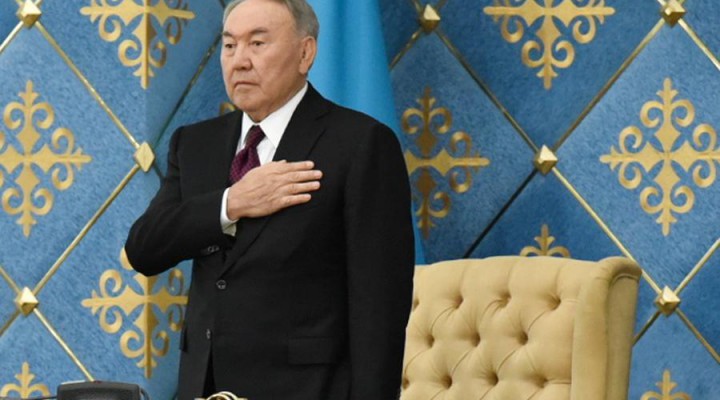
The exit of Kazakhstan’s strongman after 28 years at the helm won’t end its pivotal regional role
At first, it sounded like a geopolitical bombshell: Kazakhstan president Nursultan Nazarbayev, 78, in power since 1991, dramatically announced his resignation. In a “special” address, significantly delivered in both Kazakh and Russian, Nazarbayev said: “As the founder of the independent Kazakh state, I see my future task in ensuring the coming to power of a new generation of leaders who will continue the ongoing reforms.”This “new generation of leaders” for the moment is personified by Senate Speaker Kassym-Jomart Tokayev, who assumes the role of interim president. Tokayev is a former foreign minister, deputy prime minister and prime minister.
Kazakh analysts stress that Nazarbayev has been preparing his succession for years now, very careful not to cause any geopolitical turbulence. Before the official announcement of his resignation, he called Russian president Vladimir Putin. As much as Nazarbayev prides himself in having crafted a multi-vector foreign policy – which includes good relations with both China and the United States – the top geopolitical alliance is with Russia.
Wily as ever, Nazarbayev resigned but placed himself in a lifelong status of head of the Kazakh Security Council while at the same time limiting presidential powers.
So the whole drama in fact walks and talks like a Central Asian remix of Giuseppe di Lampedusa’s notorious motto in the film The Leopard: “If we want things to stay as they are, things will have to change.”
How to build a pivot
Kazakhstan, as the de facto pivot of Eurasia, is immensely important in the chessboard of the 21st century New Great Game. Politically, Central Asia has always been a case of dynasties whose tribal legitimacy is transferred to dynastic legitimacy, imposing themselves over vastly diverse populations by using a state apparatus inherited from the Persian tradition.
Russian colonization in Central Asia was not much different from the British and French models, including, for instance, colonies in northern Kazakhstan. Yet there has not been a lot of Christian Orthodox religious proselytism across Central Asia except, once again, in the Kazakh steppes, where the Russian population had already reached almost 50% at the start of World War II.
Russian is a key language in Kazakhstan, Tajikistan and Kyrgyzstan. Russians don’t have dual nationality but keep their ethnic identity inside the former USSR republics. All ethnic groups hold the absolute majority in their respective republics.
Kazakhstan consists of 53% of Kazakhs, roughly 30% of Russians and 17% of assorted minorities. Kazakh Eurasianism is a fascinating phenomenon, a sort of multicultural, multi-confessional Eurasianism of the steppes different from the Russian concept. Kazakhs see themselves as the center of Eurasia in a long axis linking Russia, Kazakhstan and Turkey.
Nazarbayev has been very clever right from his start in the 1990s, promoting Eurasianism side by side with a “Kazakhstanization” of the local elites and solidifying Islam as the official religion of the nation.
He built the new capital, Astana, from scratch, literally in the middle of the steppes, complete with a Lev Gumilev Eurasian University; Gumilev is one of the most notorious Russian scholars of neo-Eurasianism. But what Nazarbayev was really aiming at was to establish a nomad state tradition, pre-Soviet, non-Eurocentric and not subjected to Russian hegemony.
At the same time, Kazakhstan under Nazarbayev is one of the founding members of the Russian-led Eurasia Economic Union (EAEU). But true to its multi-vector policy, also a key node of the New Silk Roads, or Belt and Road Initiative (BRI). Nazarbayev is very much involved in building Kazakhstan as the inevitable bridge in a transcontinental axis linking Asia to Europe. A New Silk Road vision, of course, in harmony with both China and Russia.
Pick a union
In fact, Nazarbayev himself came up with the original idea of a Eurasian Union way back in 1994. He had the European Union in his sights. But a supranational mechanism, inspired by the EU, only came to light in 2012, under Putin’s supervision.
The EAEU – with Russia, Belarus, Kazakhstan, Kyrgyzstan and Armenia as current members – aims to offer economic integration to the former USSR space while advancing some sort of integration with the EU. Brussels for its part is more interested in fragmenting the post-Soviet space – attracting Ukraine, Georgia and Moldavia.
Ukraine, before Maidan, was supposed to be a bridge between the EAEU and the EU. Now, we have Kazakhstan as the pivot between the EAEU and BRI. Add to it that Kazakhstan is also a key member of the Shanghai Cooperation Organization and a founding member of the Asia Infrastructure Investment Bank.
We should always remember that President Xi Jinping officially unveiled BRI in Astana, in 2013. The key railway link between the Chinese plains and Central Asia via the Eurasia Land Bridge goes through Alashankou in Xinjiang; the de facto Western Gate of BRI, China’s largest dry port, and a companion to another hub, Khorgos, with its twin special economic zones serving both Russia and Kazakhstan.
China is linked to Kazakhstan by a “comprehensive strategic partnership” similar to Russia’s, in effect since 2005. Nazarbayev is betting simultaneously on China and Russia. With or without a presidential title, the name of the game will continue to be Eurasia integration.
https://www.asiatimes.com/2019/03/article/why-nazarbayevs-legacy-will-remain-intact/

Pepe Escobar
Pepe Escobar, a veteran Brazilian journalist, is the correspondent-at-large for Hong Kong-based Asia Times. His latest book is “2030.”
 TheAltWorld
TheAltWorld
0 thoughts on “Why Nazarbayev’s legacy will remain intact”